Nature needs YOUR land ethic!
Stay connected through our down-to-earth e-news.
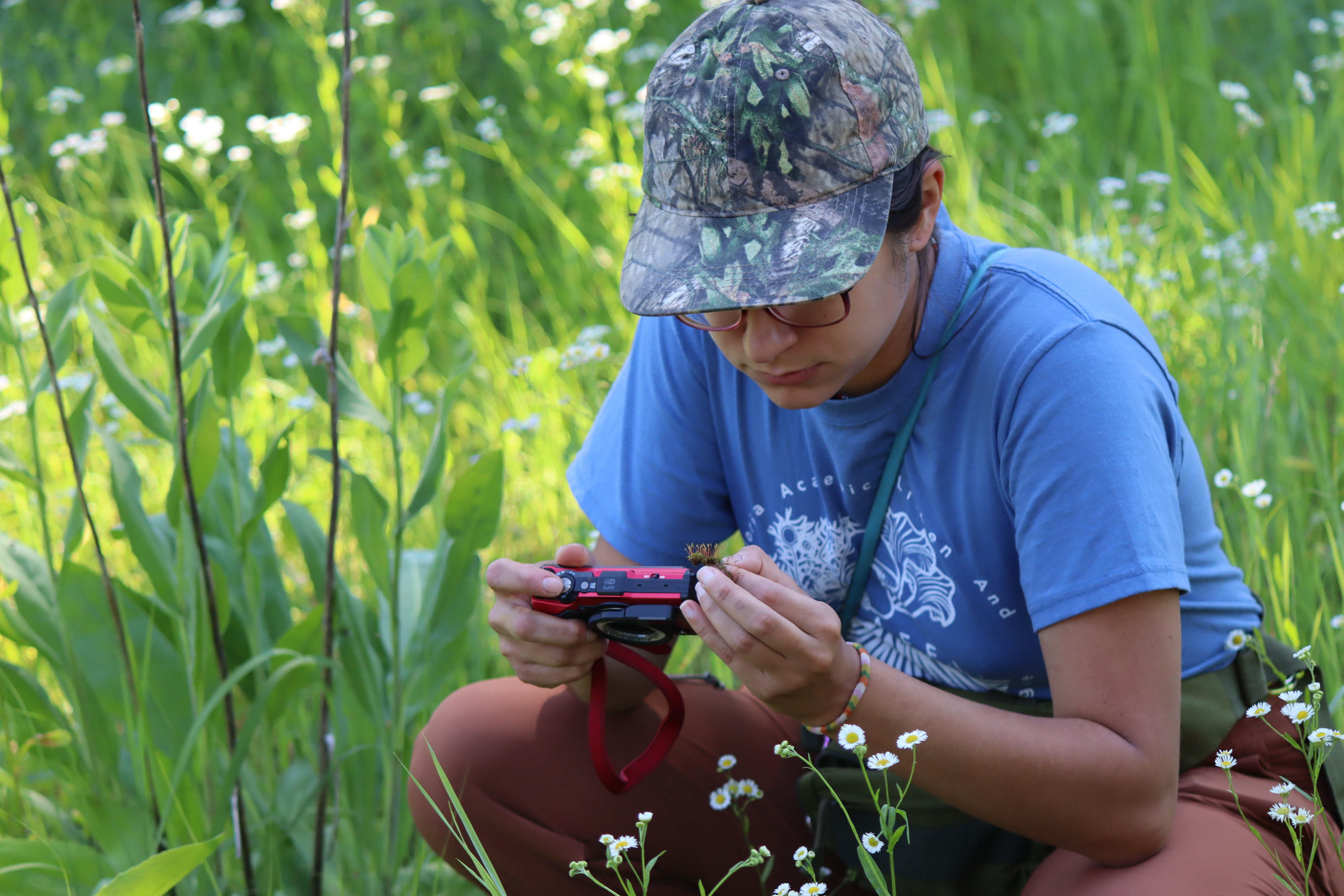

Everything about it screamed “frenzy.”
Just 24 hours. As many species as you can find. Go, go, go! Run for the hills! I imagined people rapid-fire shouting off the names of birds while others frantically scribbled them on a clipboard. I envisioned scientists sprinting over the landscape to cover as much ground as they could. Bleary-eyed folks who’d pulled all-nighters wired by morning caffeine and competitive energy as the finish line neared.
But when the starting airhorn blared on Friday afternoon, there was no rush. No hurry. People ambled away from base camp, seemingly without a care in the world. I’d expected a launch off the starting block. Except this wasn’t a sprint. Sure, there was a timer, but this wasn’t really a race at all.
~
Milwaukee Public Museum (MPM) organizes a BioBlitz every summer. Each year, their crew—in addition to dozens of scientists and surveyors—visits a different site in Wisconsin to see how many species they encounter in just 24 hours. It's a fun way to explore and celebrate the state's biodiversity, or the variety of lifeforms in our area.
For their 10th year, MPM selected the Aldo Leopold Foundation as the BioBlitz survey site. Centered around the historic Shack and Farm, the Leopold-Pines Conservation area spans over 4,000 acres of restored prairie, savanna, and wetland—the blood, sweat, and tears of our small stewardship team as we work to reintroduce old Wisconsin habitats for the creatures that need them most. To be chosen for the BioBlitz was an incredible opportunity to see what species had made a home here, and to share the fruits of our restoration with eager naturalists from all over the state and beyond.
Had Leopold lived to see a BioBlitz, he surely would have taken part.
~
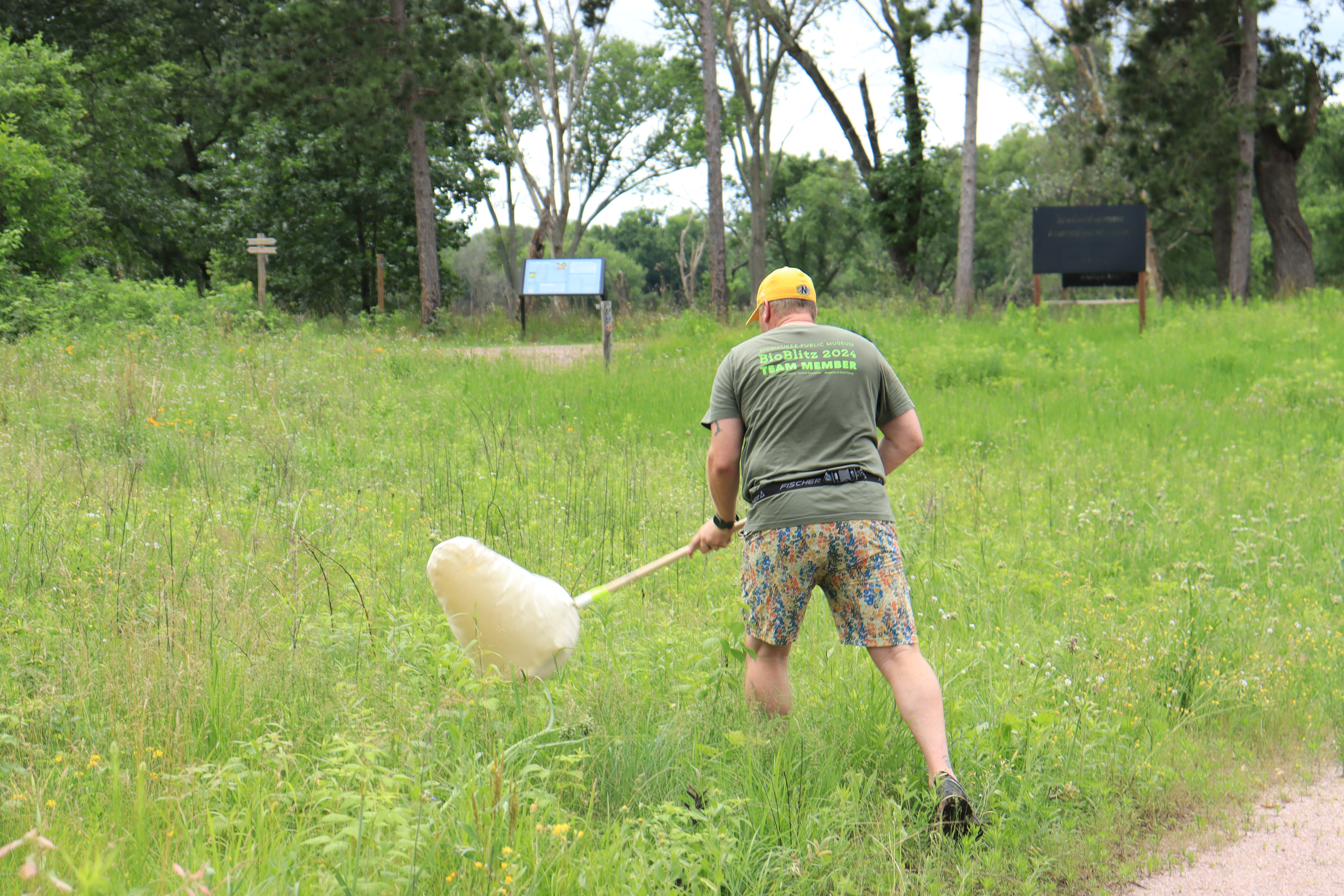
Given the layout of the property, I figured I’d immediately find plenty of surveyors just around the building, in “Zone 1.” But I only came across one man with a net. As he swung it back and forth through the tall grass like a scythe, I wondered what he was catching. “Spiders,” John answered, when I asked the question aloud. He invited me to take a look. The net—which was more of a cloth bag on a stick—held an assortment of plant bits, stems and leaves and flowers, as well as crawling critters. John explained that he was catching the arachnids in vials of alcohol for later identification.
“They fall easily,” he said. A tiny black spider dropped on a strand of web from the edge of the net; John’s other hand swooped in with the jar. Indeed, its natural falling tendency made the capture seem effortless.
John was something of a BioBlitz veteran. Sporting a Blitz T-shirt from the previous year, he’d participated in the event for over two decades—long before Milwaukee Public Museum started hosting their version. He also shared a connection to Aldo's daughter Nina, which made the Blitz’s location at the Aldo Leopold Foundation personally special.
~
The surveyors dispersed in a slow outward trickle: a few on a trail here, another handful along Levee Road. At the Shack gate, one person in a bright yellow vest was holding up a piece of bark to two others. I approached, muscling my way into the little bubble they’d created, and discovered it wasn’t so much the bark that was of interest, but the tiny fungi growing up out of it.
“Are you a fungi expert, then?” I asked, after the requisite ooh-ing and aah-ing. Who among us can resist anything that small and adorable?
Mariah downplayed it, but her role as president of the Wisconsin Mycological Society (which I only found out later) certainly suggested a deep passion for fungi, if not also some encyclopedic knowledge. Regardless, her excitement for the little mushrooms was infectious.
.png)
Further down the path, beyond the Shack orchard, I encountered another fungal fan. Crouched with a camera, Andrew was zeroing in on lichens. “Lichen’s very photogenic after it rains,” he explained. The fungi-algae composites were indeed, as he’d described, very juicy and ripe for some photos. The prize find was a Punctelia bolliana. To my untrained eye, it looked like barnacles opening up into lily pad-like mouths—and even I could agree it was a perfect specimen.
Though not a professional mycologist, Andrew has extensively documented fungi found across the state in a website aptly named wisconsinmushrooms.com. He invites others to share photos and finds, and to correct any misidentifications he may make. But despite the intimidating level of detail, he gears the site toward non-specialists.
It’s a thread that carries through the BioBlitz. These are people who have dedicated so much time and study to a certain biological niche, yet they make space for newcomers to learn, open up their worlds—and their awe—to the rest of us.
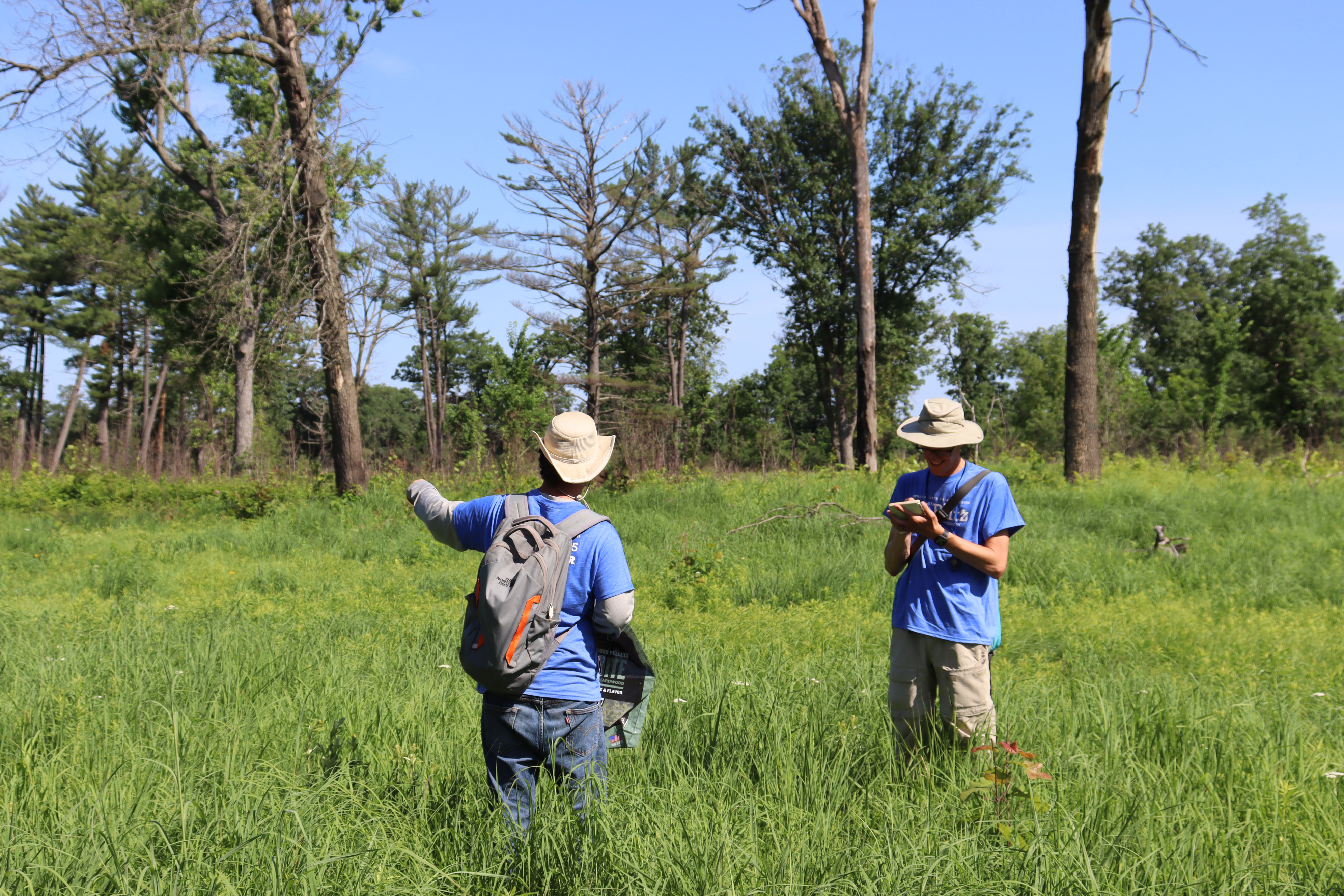
~
Despite the crowd at BioBlitz’s Friday kickoff, all in attendance that afternoon were surveyors, or folks otherwise working the event. On Saturday, however, the public was invited to join the biodiversity celebration. Partner organizations—including the likes of the International Crane Foundation, Cable Natural History Museum, and Wisconsin Bumble Bee Brigade—set up demonstration and activity tables at base camp. Folks could wander in to the Three Seasons Classroom to see surveyors at their microscopes, identifying and cataloging their finds thus far. A nature journaling session offered a chance for participants to stop and smell the flowers—or, more accurately, to contemplate and sketch them; and the timing couldn’t have been better, the rain garden colorfully lush with butterfly weed, pale purple coneflower, and black-eyed Susan. Perhaps the biggest attraction, though? Three guided nature walks.
The first, with Keir Wefferling of UW Green Bay’s Cofrin Center for Biodiversity, invited us into the world of mosses and liverworts. We didn’t have to venture far to get our hands on some samples: there they were, growing in fuzzy green patches on the rock wall right outside the main building. We carefully passed the delicate bunches of moss around the group, magnifying glasses revealing their unseen intricacies: whorls and scales and branching, towering sporophyte stalks with seed-like tips, fractals on fractals. It made sense that most had to be identified under a microscope. But those of us who couldn’t keep up with the rapid-fire of Latin names still peered intently at these underdog plants—right under our noses, yet so often overlooked. Even the two young kids in the group were rapt.
.png)
Next was the butterfly walk. The intermittent clouds had us a bit concerned we wouldn’t actually see any butterflies—after we learned from Michael Troutman, of the Dane County Butterfly Monitoring Program, that the insects are reliant on heat to fly—but the fluttering creatures eventually did grace us with their presence: great spangled fritillaries dancing around milkweed; red-spotted purples twirling through the dappled pine forest; the tiny Edwards’ hairstreak posing on poison ivy. Patterning on both sides of the wing is key for identification; when you can’t get a close view, though—and you’re an absolute whiz—some species can be pegged just from their flight pattern.
.png)
The final tour: mycology. Mariah Rogers, fungi fanatic and president of the Wisconsin Mycological Society, led us straight to the woods. Though the peak of “mushroom season” was still a month or so out, there were fungi enough to satisfy our curiosities. Dead man’s fingers, gingertail, split gill, amber jelly. We lucked out, having an expert in our midst—as with the mosses, a microscope is needed with a lot of fungi to get to species (especially the LBMs—or “little brown mushrooms”). There are some clues that can help narrow things down, though. For example, is it growing out of the soil, or on wood (and is that wood dead or alive)? What color are the spores? (Hues can include pink and purple, among the expected white, brown, and black.) Is it solitary, or are there other similar mushrooms popping up nearby—and how close by? In some cases, these might all be one individual organism, disparate fruiting bodies sprouting forth from the same underground mycelial network. Apparently the single largest organism in the world, following this growth pattern, is the “humongous fungus” in Oregon, an individual Armillaria ostoyae that spans over 2,300 acres. The thought is shiver-inducing.
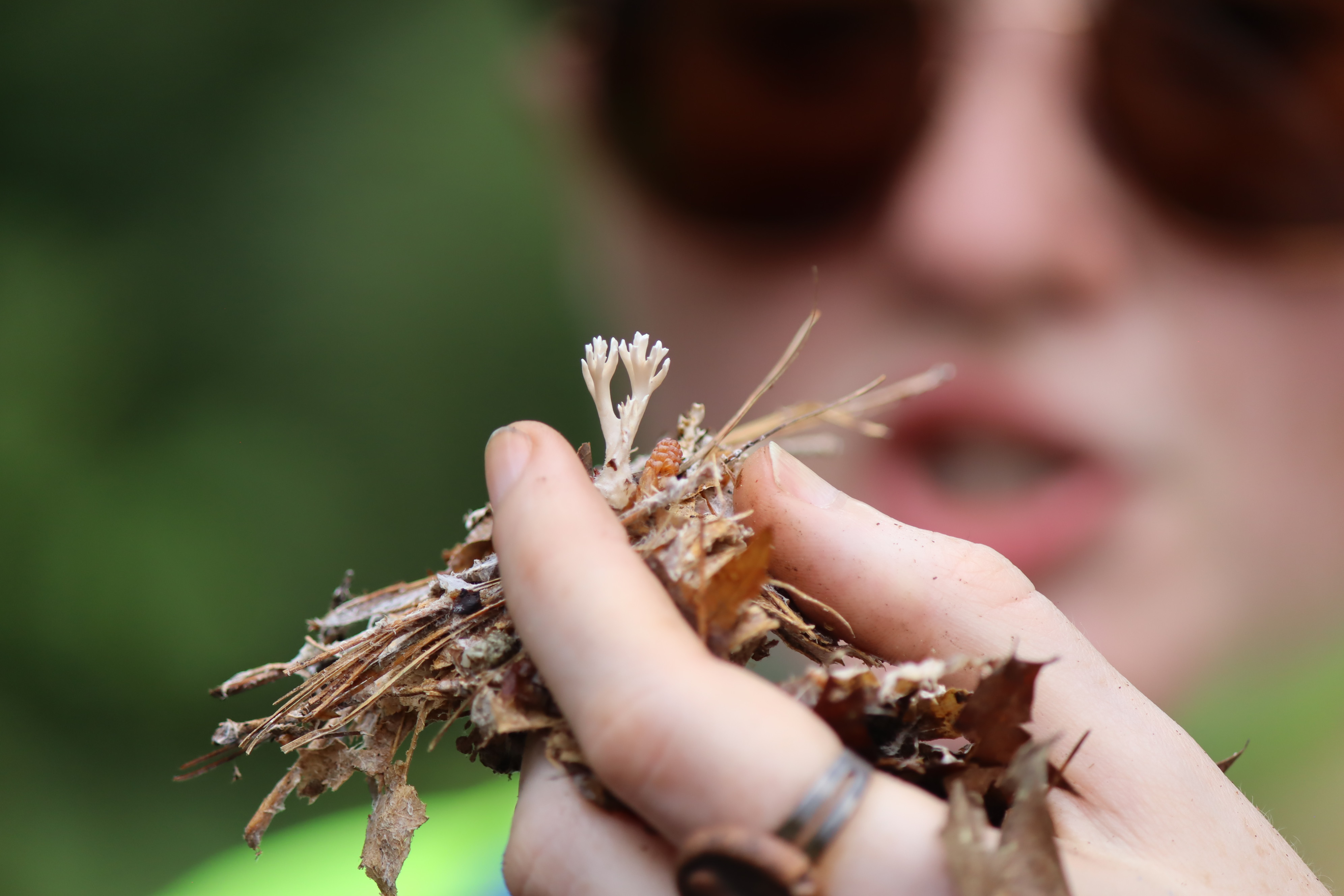
~
The red numbers on the clock ticked down. A few of the BioBlitz organizers looked harried, but as they requested the surveyors get their last observations in, their tone was almost playful—if you miss the deadline, you’re outta luck! People milled around the big tent, excited to hear the final findings.
After the collective ten-second countdown, the airhorn blared again. Counters still had to finish their tallies, so the announcer—Milwaukee Public Museum’s president and CEO Ellen Censky—bought them some time, listing and thanking all the participating organizations as well as providing some Blitz background. She slyly didn’t mention that she had in fact been behind the launch of the first-ever BioBlitz 29 years earlier, but it wasn’t about who started it. From its beginning, BioBlitz has been about community: the community of scientists, of lifelong learners, of the variety of biotic kin found all around us. It’s a gathering and celebration, a chance to explore, discover, and rejoice.
All told, a total of 1,235 species were found across the Leopold-Pines Conservation Area. (Of course, with the caveat that only the south side of the LPCA was surveyed; additionally, many moss and fungi experts, among others, needed more time and equipment to identify individual species—so some within the final count could only be narrowed down to Order, Family, or Genus.) This tally included: 11 herps (amphibians and reptiles); 67 birds; 20 fishes; 15 mammals; 356 insects; 68 non-insect invertebrates; 607 plants* (plus algae and cyanobacteria); and 91 fungi. Excitingly, a few of these (Missouri burrowing spider, red-headed woodpecker, and Henslow’s sparrow) are indicator species that reflect the quality of our preserved and restored habitats. As well, surveyors identified two county records for dragonflies (azure bluet and lyre-tipped spreadwing), the ground beetle Selenophorus pedicularius, and Davis’s sedge—it being one of the few, if not the first recorded observation of these species in Sauk County.
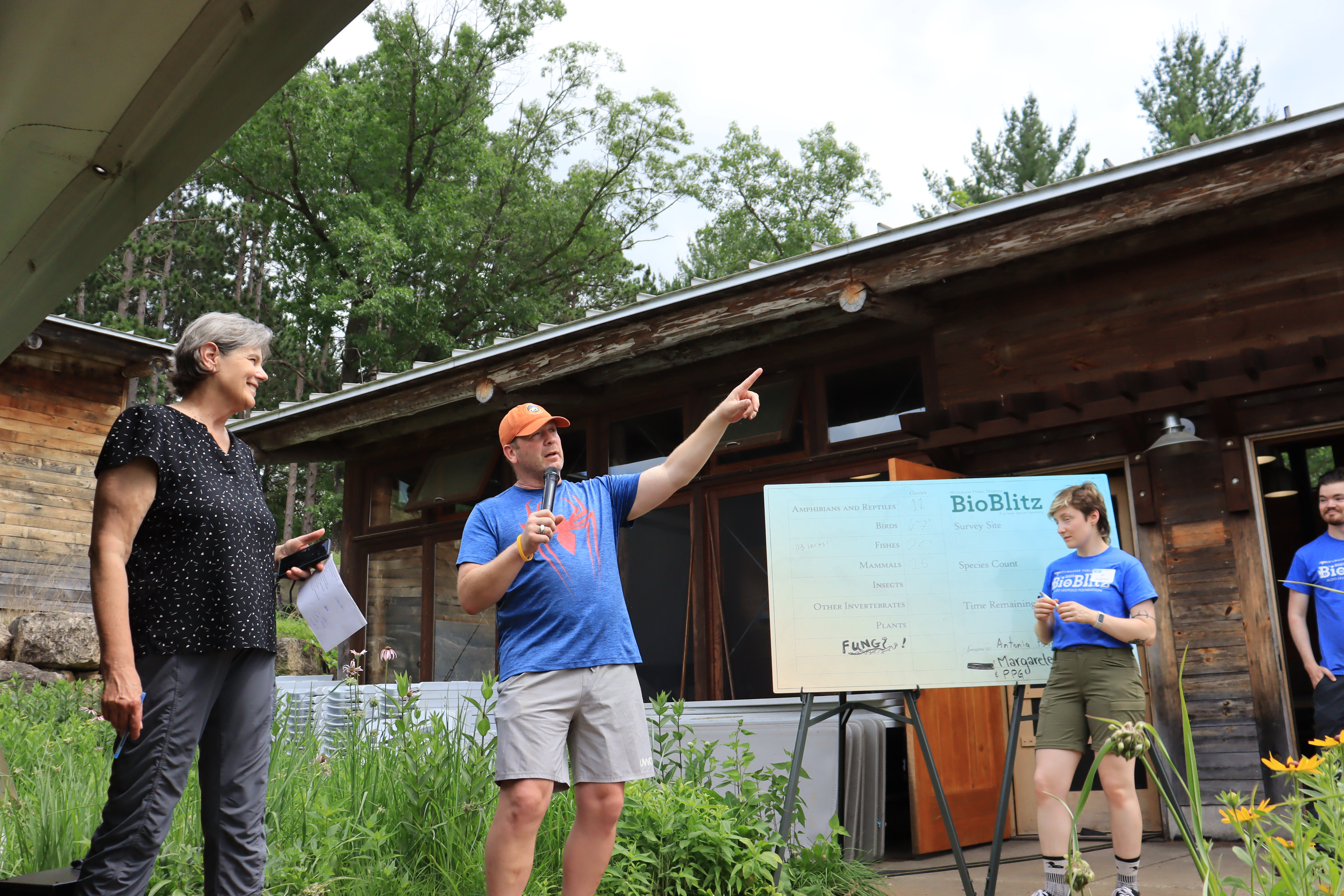
As for human presence, over 100 surveyors came out, as well as 75 civilian attendees of all ages. Reps from 30 different organizations across Wisconsin and beyond joined in and supported the event, surveying, tabling at base camp, or leading a nature immersion activity.
The Blitz “descends” on a different site every year; next summer, the surveyors will be unleashed on some park or nature preserve elsewhere in the state. Each survey location offers just a small peek into the breadth of diversity across Wisconsin—but no matter how small, it’s a chance for the human species to glimpse the larger context we exist within, to begin to appreciate the vast and varied biotic community we are part of.
So, no, the BioBlitz was never meant to be a race. But the limited timeframe turned it into a kind of mindfulness exercise. For a moment, all our excitement and curiosity and connectedness dialed in on the plants, animals, and fungi around us. That 24-hour license may have officially expired, but as for me—and I imagine many others in attendance—I’ll definitely keep geeking out for a while.
For more on this year's BioBlitz, check out the official press release from Milwaukee Public Museum.

The Aldo Leopold Foundation was founded in 1982 with a mission to foster the Land Ethic® through the legacy of Aldo Leopold, awakening an ecological conscience in people throughout the world.
"Land Ethic®" is a registered service mark of the Aldo Leopold Foundation, to protect against egregious and/or profane use.
Stay connected through our down-to-earth e-news.